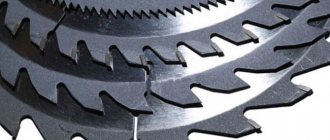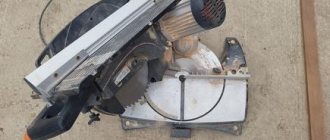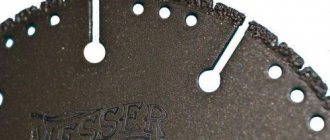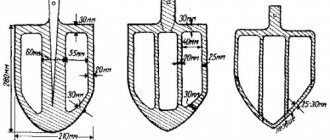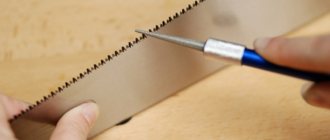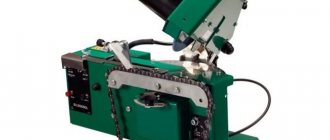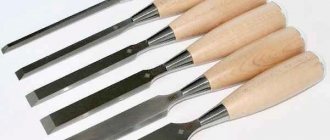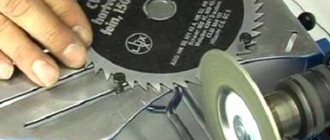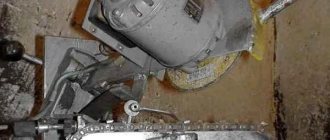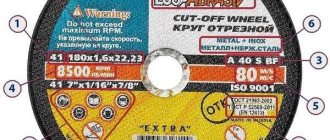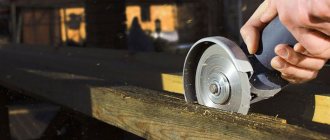A concrete drill is a specially designed drill whose cutting part is made of alloys based on tungsten and titanium. A drill of this design is designed to drill brick, concrete, stone and marble. A properly sharpened sds drill is the key to quick drilling and savings. The drill has two functions simultaneously:
- It acts as a twist drill.
- Breaks material like a chisel.
Most often, concrete drills are a rod with a soldered tip made of carbide material.
Unlike a drill for concrete and stone, the sds plus drill is used when working with a hammer drill. The tool is affected not only by the force in the plane of rotation, but also by the impact force. The drill operates under very harsh conditions.
During operation, any cutting tool becomes dull, including drills and drills. Tools heat up and drilling time increases.
In a hammer drill, the drill also experiences shock load and the question arises of how to sharpen the drill for concrete.
A few tips during the drilling process to extend the life of the concrete drill:
- Constantly monitor the heating of the tool, preventing it from overheating.
- Do not cool a heated drill or drill by sudden immersion in water.
- When drilling ceramic tiles, do not use the hammer drill mode.
Tips for sharpening a drill bit at home
Before you learn how to sharpen a drill or drill for concrete, you need to clarify the main design features of the tool.
The working edge of the drill is formed by the convergence of the front and rear edges. The angle between the front edge and the axis of the drill is 30°. The angle between the rear edge and the axis of the drill has a value of 60°.
The working edges of the drill should form an angle of 120°.
This is what a sharpened drill looks like
There is an opinion that the sds+ drill for concrete does not require sharpening and is replaced with a new one after complete wear. This version is especially warmly supported by workers in construction tool stores.
But by learning how to sharpen a drill or auger correctly, you will see that the life of the drill can be significantly extended.
Sharpening a drill involves setting the cutting edge of the drill to the desired shape. Both the front and back edges of the drill are sharpened.
When inserting a drill into a material, only the cutting edges of the tool should work, and the back of the drill should not touch the surface being processed.
At any time during the drilling process, the back surface of the drill must have a gap with the surface being machined.
Otherwise, the tool not only drills poorly, but also quickly heats up, becomes dull, and collapses.
Important tips on how to sharpen a metal drill correctly.
How to determine the wear of a circular saw?
All the qualities of a circular saw are available only with timely sharpening of the teeth. A dull blade spoils the material, increases wear on the saw’s drive mechanisms, and increases the risk of injury during operation. There are signs of dullness, when they appear, it is necessary to urgently sharpen circular saws:
- To advance the workpiece during cutting, a lot of force is required
- Chips and cracks appear on the cut
- The drive motor gets very hot during operation
- There is a smell of burnt material
- Dark marks from overheating are visible on the edge of the cut
In addition, the sharpness of the teeth can be checked tactilely and using a magnifying glass. The rounding radius of the cutting edge should be within 0.1-0.2 mm. When sawing thick workpieces, not only the main working edge is subject to wear, but also the side ones.
Work order
The wheel must be installed on the sharpening machine. Sharpening on a sharpening machine is carried out in strict compliance with safety precautions. The thrust bearing is installed with minimal clearance, work is performed without gloves, and the eyes are protected by a special shield or glasses.
Before sharpening, it is necessary to correct the peripheral surface of the wheel using a CBN insert, that is, to level the sharpening surface of the stone.
Before moving on to the answer to the question of how to sharpen a drill bit for concrete at home, let’s take a closer look at the sharpening process.
Drill bit with insert for working on concrete
We will carry out standard sharpening of drill bits for concrete.
Having secured the device, place the drill on it and bring it to the surface of the sharpening stone so that the cutting edge is parallel to the plane of the sharpening stone.
We sharpen both edges, checking their symmetry for clearance and the angle between them at 120°.
Let's move on to sharpening the leading edges
The drill rests on a fixture that provides an angle of 30°. The drill is brought to the stone plane to be sharpened at an angle of 30° and the front edge is sharpened.
Turning the drill 180°, we also sharpen the second front edge.
Now the drill must be brought to the surface of the stone to be sharpened at an angle of 60°. This is achieved by placing the drill on another part of the fixture.
Sharpening the rear edges is done in a similar way. If after sharpening you end up with cutting edges of different sizes, sharpening should be repeated in full.
To fully understand the sharpening process on a sharpening machine, watch the instructional video. Everything is clear with the sharpening machine. Or you can use a used diamond blade for an angle grinder.
But in order to sharpen a drill on a grinder, the latter must be carefully secured.
To ensure high-quality sharpening of the drill, it is necessary to equip the machine with a thrust bearing, on which the drill should rest when sharpening. A piece of corner, firmly attached to a grinder or table, can serve as a thrust bearing.
If the diamond disc is not placed on the grinder, then it can be easily secured by performing the simple manipulations shown in the video about sharpening the drill. When sharpening, it is necessary to give the back surface of the drill the required shape. The cutting edges of the drill are sharpened and the back surface is removed. Any point on the back surface of the drill should not touch the material being processed.
A few words about devices
Devices can be made not only from a wooden block, but also from a corner.
The main task is to ensure that the drill being sharpened is fed to the sharpening plane with the required angles.
Some useful tips when working with a drill
To drill a concrete surface with your own hands without any problems, you should follow the advice of experts. Some of them can be found below:
- Before you start working on concrete, you should stock up on drills for different materials, including metal. This is because concrete drills are only used for drilling holes in concrete, ceramic, stone and other hard materials. But often, when entering concrete, the drill encounters metal reinforcement. This requires the use of a metal drill, which temporarily replaces the concrete tool used to drill through the reinforcement and then put the old one back;
- During operation, it is necessary to constantly monitor the temperature of the tool. Every 15 seconds of continuous drilling, you need to pause to cool the drill, but only naturally, without the use of water or other liquid;
- If, when entering concrete, the drill rests on a hard stone, it is better to use a punch, crush the stone, and then continue working with the same tool;
- If it is necessary to make a hole in the ceiling or load-bearing wall, it is better to replace the impact drill with a hammer drill;
- If drilling ceramics, use a concrete drill, but turn off the impact drill mode to prevent splitting of the tiles;
- A dull drill can be sharpened using a grinder by installing a diamond disc on it. If you purchase high-quality expensive tools for work, they will not need to be sharpened.
Tips on what and how to choose drills, concrete drills, and how to use them are useful for both beginners and experienced craftsmen. Drilling concrete is quite difficult, so it is better to first take into account all the recommendations of specialists and choose the right working tool.
The difference between a pobedit drill and a regular drill
Traditional drills for metal or wood are most often made of tool steel or the so-called high-speed cutter - an alloy steel that can withstand temperatures and high cutting speeds. With materials like brick, tile, stone and concrete, this option is not suitable because:
- abrasive working environment;
- the instrument heats up quickly and intensely;
- Due to the heterogeneity of the material being processed, the working edges experience strong impact loads.
Therefore, drills and drills have a complex design. The main part of the tool, which is responsible for the removal and ejection of drilling products and fastening the tool in a hammer drill or drill, can be made of inexpensive, low-alloy steel. And as a cutting element, a pobedit plate is used - a special alloy of tungsten carbide with a small addition of cobalt and carbon. The plate is attached to a steel shank using copper soldering.
This tip resists abrasion well and can withstand high temperatures. But it is quite fragile and requires attention when sharpening. The service life of a drill or auger is most often determined by the degree of wear of this particular plate.
Drilling performance largely depends on proper sharpening of the tool.
Now about the differences between a drill and a drill. A drill for stone or concrete with a pobedit tip differs little from a drill for wood or stone in appearance, approach, and sharpening. The usual one allows for impact during drilling, but is still more suitable for drilling. Therefore, only one rear edge is sharpened. The drill was created to work with a hammer drill, where impact prevails over rotation. That is, the drill works both as a chisel and as a drill. Therefore, it sharpens from both edges - both the back and the front.
The design of the shank depends on the mounting method in the tool. The design of the spiral that removes crumbs from the cutting zone may also vary. The differences are largely due to the tool production technology and the characteristics of the material to be worked with. Although the configuration of the spiral part is only important when drilling deep holes. In small drills there is a body without a spiral at all or with a spiral made as schematically as possible, even primitively. Although there are modifications and four-way ones, in which the problem of dust removal is radically solved.
Basically, the performance characteristics of a drill or auger depend specifically on the condition of the pobedite soldering, so when sharpening for materials with different characteristics, you should pay attention to this part of the tool. Although the general principle remains unchanged. The harder the material to be drilled, the smaller the angle given to the cutting edge.
Drills are a very specialized tool - for each material there is one.
Differences in working teeth by geometric shape
The tooth has several working planes. The front plane “A” together with the rear “B” at the intersection form the main cutting edge “1”. At the intersection of the plane's thin lines with the side "B" auxiliary edges "2" and "3" are formed.
Schematic representation of a blade cutting edge
To effectively work with materials, various types of cutting teeth have been developed.
- Basic shape – straight tooth
Designed for rough and fast cutting. The cut quality is low, so it is not suitable for fine work and jointing of hard materials.
Read also: How to make a machine for knitting fishing nets
This shape of the cutting edge allows you to make smooth, precise cuts and is well suited for composite materials, for example, chipboard with double-sided lamination. There are practically no chips left on hard surfaces. Teeth with a beveled back surface are excellent at cutting hard workpieces, but at the same time they become dull faster. The slope alternates, so a canvas with this shape is called alternately beveled. Both the trailing and leading edges can be beveled.
The main advantage is slow dulling. Such working teeth alternate with straight ones, working in a complex manner. The trapezoid is slightly higher than the main tooth, and, as it were, cuts through the material “roughly,” making it easier for the straight edge to work. Used for cutting plastics and materials with durable double-sided laminate.
Discs with conical teeth are auxiliary. With their help, a preliminary cut is made in the laminate to prevent the formation of chips when cutting. Not used as a stand-alone tool.
In addition, the front plane of the teeth may have a concave shape. These saws are designed for cross cuts. The concave plane and sharp edge cut the transverse fibers of the material like a sickle.
Sharpening circular saws with your own hands video
There are discs with alternating active and passive teeth. Passive ones have a negative sharpening angle.
Choosing a tool base for sharpening
You don't need much to sharpen drills at home. A simple electric sharpener, better known as “emery”, is enough. At the same time, the power of a simple household model is quite enough, and there is no need to be puzzled by the search for some kind of professional device. The optimal size is one that allows you to install grinding wheels with a diameter of 200 to 300 mm.
The grinding wheel itself can be diamond or CBN - the best choice. But, if they are not available, then the more familiar silicon carbide will do. Those who are not well versed in sharpening wheels can be guided by the color of the stone. For victory, gray or greenish is suitable. Red and white are no good.
The winner itself tolerates intense heat well. But the solder, with which it is attached to the body of the drill, and the steel from which this steel is made, do not tolerate overheating during sharpening. Therefore, care should be taken to cool the drill in advance. That is, prepare a small container of water.
Pobedit does not like thermal shocks, like most solid materials. That is, when a heated pobedite drill tip is lowered into water, it can collapse and crack. To prevent this from happening, the drill being sharpened, when it heats up, is first cooled in air for some time and only then dipped into water. The duration of exposure to air depends on the intensity of heating and the size of the drill.
By the way, if you are not confident in the correctness of independently determining the critical temperature point for safe cooling with water, then it is better to do without it altogether - regularly cool only in air. True, this method will delay the sharpening process.
Tool selection criteria
To make the right choice of which drills to drill concrete with, you must first determine the volume and type of work to be performed.
To carry out small repair operations in your home, it is enough to use diamond drills with a diameter of 6 - 10 mm. If you need to hang a picture, it is better to take thinner tools with a diameter of 3 mm to 5.5 mm.
The diameter of the drill affects the depth of the mounting hole:
According to GOSTs, all tools are marked, indicating the diameter and length, which helps to choose without error the size of the drill for a concrete screw to make a hole on a specific surface.
For example:
- Drill 6×110 mm. This is the most versatile and indispensable tool when making repairs in your homes;
- Drill 8×600 mm. Such long tools are used to drill deep holes;
- Drills 12×200 mm and 12×460 mm are used when it is necessary to drill holes for fastening furniture and laying electrical cables;
- Drill 24×460 mm. This drill is quite large in size and is often used when installing water supply and heating systems.
These are the main characteristics when choosing a drill. To learn in detail what types of tools there are for drilling and drilling holes in concrete, and how to choose the right ones for a particular case, you should watch the video in this article. Particular attention should be paid to the manufacturer.
Safety precautions
First of all, you need to follow the rules for safe work on sanding wheels. It's simple. Be sure to use safety glasses to protect your eyes from pieces of scale and abrasive, even if the sandpaper is equipped with a transparent protective screen. It is imperative that you do not wear gloves on your hands - it is enough to catch one thread, and the whole hand will be wrapped in the mitten after it. For the same reason, we carefully fasten all the buttons (especially on the sleeves) - and no fluffy, fluttering clothes.
The sharpening stone must be carefully aligned and free from runout - ultimately, compliance with this point will also affect the quality of sharpening. The rest should also be adjusted - a large gap between it and the stone is a source of potential danger, especially when sharpening thin drills, since both the drill and your fingers can get caught there.
In general, there is one more rule for working safely with power tools: don’t be afraid of them. But showing respect is a must.
Execution of work
Let's start with the fact that when sharpening drills, we pay special attention to symmetry. Otherwise, there may be beating and uneven wear of the tool, or even breakage. Although, when compared with a drill for metal, such perfectionism is less important for a pobedite drill - slight sharpening flaws are quickly leveled out by themselves during the work process. But you should still strive for accuracy.
The second difference between sharpening a drill for concrete and one intended for metal is that the latter has a slightly rounded rear edge; it seems to change the angle behind the cutting edge. This is not required for a concrete drill - the trailing edge forms a flat plane.
For both a hammer drill and a drill designed to work with a drill, the apex angle should be about 110–130 degrees. That is, this is the angle that two cutting edges form when they converge at the tip.
Particular precision in determining angles is not required. Approximate values, “by eye”, are sufficient. If the eye is weak, which is especially true when sharpening small-diameter drills, then you can make a template from a pair of nuts, as indicated in the video.
The drill, as already mentioned, only sharpens the back edge. Its sharpening angle is approximately 60 degrees to the axis. In this case, the plane must be uniform. It’s good to evaluate this by the reflection - an uneven finish on the working plane indicates that there are several planes. Then you need to adjust until one comes out. To prevent this from happening, it is enough to fix the drill, pressing it evenly against the stone, and not try to tighten it. That is, we move the drill relative to the stone left and right to wear the stone evenly, but do not change the angle of the drill relative to the stone and the tool rest.
Important point! With pobedit drills, it happens that the leading edge is covered with solder. Then you need to sharpen it too. We simply remove excess metal along the axis of the tool, opening it up. It is important not to overdo it here, otherwise you can loosen the fastening of the plate to the steel base.
A hammer drill is, in principle, sharpened in exactly the same way. Only the leading edge is also added, it is given an angle half as small - 30 degrees relative to the axis of the drill. Usually one leading edge is sharpened, then the drill is turned 180 degrees and the second edge is adjusted. The rear edges are sharpened next - in the same way, one by one. If the drill is not sharpened from scratch, but only straightened, it is worth ensuring that all traces of wear are removed from the drill head. Only then will he begin to drill normally.
We also pay attention to the tip of the drill - the place where both leading and trailing edges meet. There should be a bridge between the working edges (where the back edges meet). The smaller it is, the more accurately and faster the drill will drill, but the faster wear occurs. By changing the sizes of the front and rear edges, you can ensure that this jumper disappears altogether - such a drill is useful for drilling ceramic tiles without hitting them. But for concrete, it is still better to leave the lintel (0.4–5 mm, depending on the diameter).
You can sharpen the drill a little differently - with a self-centering tip, the so-called. “sharp” or “step” sharpening. Its essence is that a spike is formed at the top of the drill, which centers the drill and allows you to more accurately maintain the direction when drilling without impact. The essence of the method can be seen in these videos.
While practicing the skill of sharpening drills and augers, do not hesitate to make useful simple devices on the advice of the masters. As a rule, such products do not require special expenses, but the quality of work increases significantly. They also make it easier to learn useful skills so you can do without them later. But as long as your hand is not full and your eye is not developed, such equipment will save you from a lot of unpleasant moments.
In accordance with applicable law, the Administration disclaims any representations and warranties that may otherwise be implied and disclaims liability in relation to the Site, the Content and its use. More details: https://seberemont.ru/info/otkaz.html
Was the article helpful?
Tell your friends
To make holes during construction work, it is recommended to use a drill and pobedit drills. They are characterized by precision in operation and long service life. When the drill wears out, you can sharpen it yourself
Several ways
A drill, penetrating into the material being processed, must come into contact with the workpiece exclusively with its cutting edges. All other points on the flank surface must have clearance with the bottom of the hole (cutting surface). For clearance to exist, the shape of the back surface must be different from the shape of the bottom of the hole.
There are a fairly large number of possible sharpening methods that make it possible to create the desired clearance angles, the gap between the back surface of the drill and the cutting surfaces. Depending on the shape that the back surface will receive, they can be divided into helical, conical and flat sharpening methods.
Using a conical sharpener
When conical sharpening a drill, it is necessary to correctly set the geometric parameters.
Conical sharpening is the most common method. The drill is installed in a prism, which has the ability to swing around an axis that is inclined to the working surface of the grinding wheel. The swing axis and the drill axis are crossed. This means that they will lie in two parallel planes.
The drill, which is fixed in the prism, is brought to the grinding wheel. The rear surface will take the shape of a section of a conical surface. The vertex of the cone will lie at the intersection of the generatrix of the working surface of the circle with the swing axis.
Depending on the geometric sharpening parameters that were specified. When conical sharpening you should adjust:
- The distance between the crossing axis of swing, which is the axis of the sharpening cone, and the axes of the drill (h).
- Distance from the drill axis to the tip of the sharpening cone (H).
- The angle of intersection between the axis of the sharpening cone and the axis of the drill (o).
- Half the sharpening cone angle (b).
Two types of conical sharpening are used:
To obtain other values for the inclination of the transverse edge, change the parameters and settings.
- The tip of the sharpening cone is located higher than the tip of the drill. In this case, the settings will be as follows: a = 45 degrees, b = 13-15 degrees, H = 1.9D, h = (0.05-0.08)D. The angle of intersection of the axis of the drill and the cone in this case is less than the angle φ0 between the axis of the generatrix of the grinding wheel and the drill.
- The tip of the sharpening cone is lower than the tip of the drill. The distance of the tip from the drill is H = 1.16D, half the sharpening cone angle b = 30-35 degrees, the intersection angle of the drill axis and the cone axis is o = 90 degrees, offset h = (0.05-0.08)D. For this type of sharpening 0 > f0.
The specified installation parameters are capable of providing clearance angles for the peripheral point a = 5-7 degrees, a leading angle 2f = 116-118 degrees, and an inclination angle of the cutting transverse edge Ф = 55 degrees.
If there is a need to obtain other values of the rear angles a and f (inclination of the transverse edge), the setting parameters should be measured.
The clearance angle is adjusted by changing the distance h between the crossing axes of the drill and the sharpening cone. The inclination angle of the cutting transverse edge (φ) is by rotating around an axis, the planing angle is a change in the angle o and b. With increasing distance between the axis of the drill and the axis of the sharpening cone (h), a will increase, and angles φ and 2φ will decrease. An increase in o, b and H, on the contrary, reduces 2f, f and a.
The clearance angle, which is measured in cylindrical sections, increases as it approaches the drill axis during conical sharpening.
Cylindrical section of the drill.
The first type of sharpening is capable of creating a sharper increase in the rear angles. Such a change in the rear angles is favorable. This is explained by the work of the drill. In addition to the rotational movement during operation, the drill will move along the axis. Consequently, the trajectory of each of the points is a helix. This line is inclined to the cutting plane, which is determined without taking into account the axial movement of the drills at an angle m. Its value is determined by the formula tg m = So / pD, where So = feed, mm/rev.
The actual clearance angle will decrease by a value of m. The closer the point in question lies to the drill axis, the more the clearance angle, which is measured during operation, will decrease. Consequently, an increase in clearance angles closer to the axis, which can be obtained with conical sharpening, will help increase durability.
Use of screw
When using the screw method, automation of the sharpening process is possible.
Screw sharpening is the method that makes it easiest to automate sharpening. The drill will be given rotation and two translational movements, which are coordinated with it, in relation to the grinding wheel. One of the movements is directed along the generatrix of the circle, the other along the axis of the drills. Oscillating is the movement along the generatrix of the circle parallel to the cutting edge, because it will not create back angles.
The backing movement is along the axis of the drill. During the screw sharpening process, there are 2 sections on the cutting edge: section 0-1, which is located on the diameter of the core. Sanded with a wheel edge. Section 1-2 of the circle's generatrix. In section 0-1, a sharpening of the jumper can be observed. In this section, the plan angle will decrease by the value of the angle v, which is formed by the vector vc. It is equal to the sum of the oscillation vectors v0 and the backing vectors v3 with the direction of the oscillation vector.
In a cylindrical section, the back angle in section 1-2 will be determined by the value of the backing vector: tg a = 2 | v3 | / (wD) or tg a = 2H3 / (nD), where H3 is the backing stroke, w is the angular speed of rotation of the drills.
The oscillation stroke is assumed to be approximately equal to or slightly greater than the core diameter. Relief angles will increase with increasing backing stroke. The clearance angles will not change as the oscillation stroke increases.
Diagram of screw drill angles.
Just as with conical sharpening, with helical sharpening the clearance angles, which are measured in a cylindrical section, increase as they approach the axis of the drill. In this case, the increase in the rear angles occurs to the same extent as their decrease as a result of the peculiarities of the drilling kinematics. Consequently, when setting even small clearance angles on the periphery, it will be possible to obtain clearance angles of the required size close to the drill axis.
When sharpened with a screw, the transverse cutting edge will become less durable as a result of sharpening. This will worsen the operating conditions of drills during drilling of strong and hard materials and cause increased wear of the transverse edge due to increased specific loads.
In the process of drilling materials of relatively low strength (aluminum alloys, cast iron and others), the strength of the tips will be quite sufficient. The drill can easily penetrate the material being processed. This can significantly improve drilling productivity and accuracy.
When working with solid carbide drills, two-plane sharpening can provide high durability when drilling material of relatively low strength and hardness - aluminum alloys, cast iron, non-metallic materials. When drilling hardened and difficult-to-cut steels with two-plane sharpening, increased wear of the cutting transverse edge near the centering point at the tip will be observed.
Basic rules for sharpening
Before sharpening a concrete drill at home, you need to familiarize yourself with the basic rules for this procedure:
- Sharpening a drill for concrete should be carried out in compliance with the optimal body temperature. It is strictly forbidden to overheat it, as this will lead to damage to the product. This rule must be followed if the drill is made from a titanium-based hard alloy.
- If the drill accidentally overheats, it is strictly forbidden to lower it into water. It should cool down naturally.
- The work needs to be done gradually. Initially, a small part of the drill is sharpened. After the sharpened section has cooled, we proceed to the next one.
- During the work process, it is recommended to focus on equality of angles.
- The cutting edges of the drill must be of the same length, since under high loads the tool will be pushed to the side, which causes breakage.
Sharpening of drills used in a drill or hammer drill must be carried out in strict accordance with the rules, which will ensure their excellent performance.
Tooth material and shape
Saw blades are steel blades whose tips are high-temperature welded cutters.
As a rule, these parts of the tool are made of sintered tungsten-cobalt alloy (grades VK, VK6, VK15, etc.). Hard alloys are also used. But it should be taken into account that the strength depends on the grain size of the carbide phase.
The soldering itself (tooth) has the following planes:
- Front;
- Rear;
- Two side (auxiliary).
That is, intersecting, they form two cutting edges:
Features of pobedit drills
To produce products, high-strength metals are used - tungsten, cobalt, which are mixed with carbon. With the help of such tools, drilling is carried out in brick, stone and other materials of a high level of hardness. The Pobedit plate is fastened to the steel tail using copper soldering. The diameter of the drill is measured in cylindrical sections.
The drill has a conical surface and is characterized by abrasion resistance. The product is resistant to high temperatures. But, it is characterized by fragility, so sharpening work must be done carefully. In pobedit drills, only the trailing edge is most often sharpened.
How to sharpen a pobedite drill bit?
When sharpening, you need to pay attention to symmetry, since in its absence the tool will wear out. Pobedite drills require sharpening only the back edge at an angle of 60 degrees. During work, you need to ensure the uniformity of the plane. It can be identified by its reflection. Several reflections indicate that the drill is sharpened in several planes. In this case, repeated sharpening is carried out until one plane comes out.
If the leading edge of the Pobedit drill is covered with solder, then you need to sharpen it too. The work consists of removing excess metal along the axis of the tool and opening the vibrator. It is not recommended to overdo it in this case, as this can lead to loosening of the fastening of the plate to the steel axle. When sharpening, you need to ensure that there is a bridge between the front and rear edges.
Measuring the degree of sharpening of a circular saw
In most cases, circular saws with pobedit tips are rarely used, but for significant volumes of material and for a long time. Therefore, it is quite normal that the incisors begin to wear down over time. This product must be sharpened as needed. Determining the degree of sharpening is quite simple:
- When sawing the material, irregularities, nicks, and chips begin to appear, and when cutting wooden objects, a characteristic smell and black marks on the material begin to appear;
- Working on the machine becomes more difficult, since more effort must be applied, resulting in a heavy load on the engine.
Important! Failure to monitor the sharpness of the disc cutters can lead to the fact that the product can no longer be sharpened or repaired. Therefore, it is worth carefully monitoring the condition of the instrument.
It should be noted that, as a rule, these machines are equipped with protective relays. But if there are none, the device may fail faster if sharpening is done incorrectly or at the wrong time.
